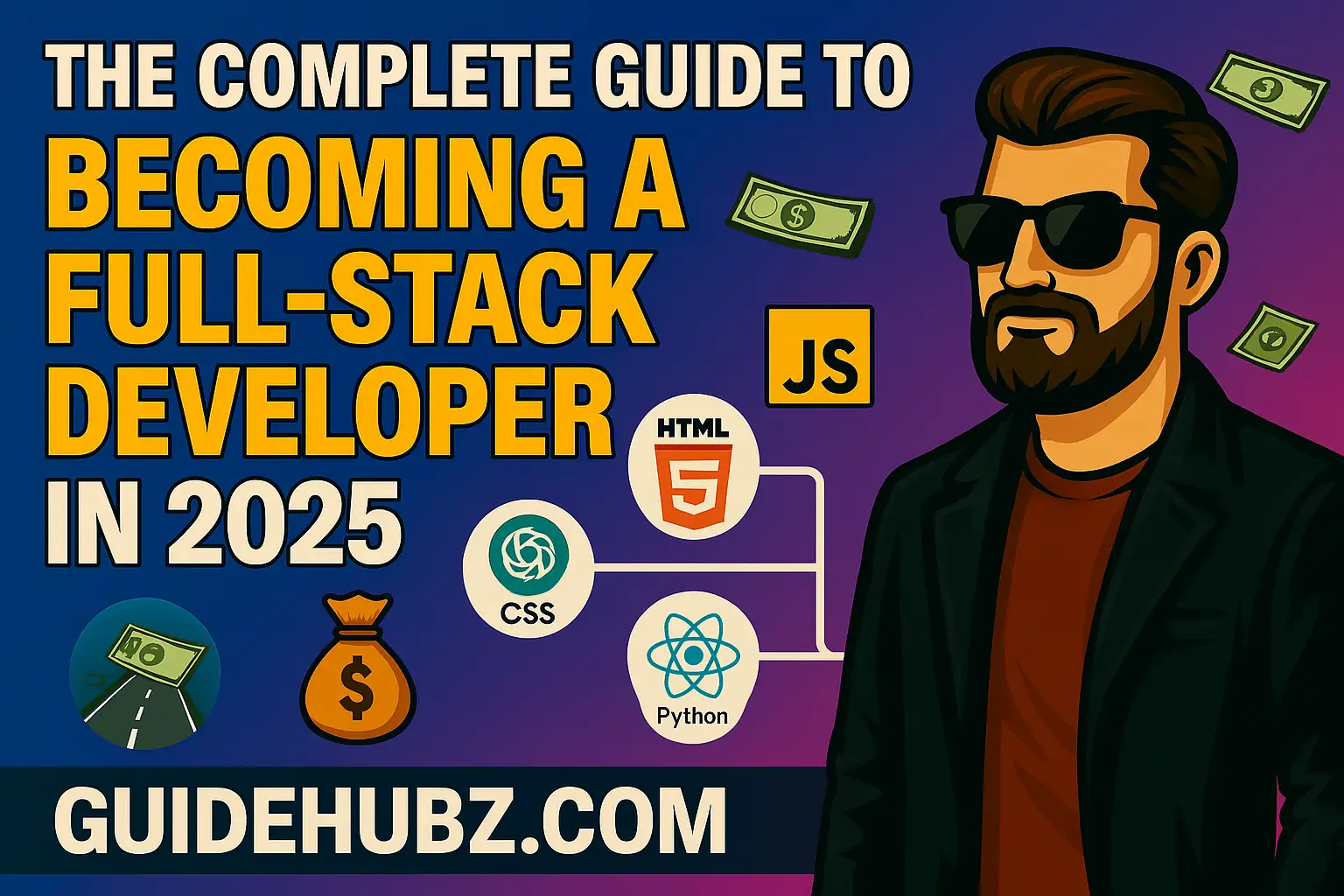You work hard, you try to save, but somehow you always end up broke before payday. The truth? Your financial struggles might not be about how much you earn, but about hidden money habits silently sabotaging your progress. After analyzing hundreds of financial cases, I've identified seven sneaky habits that keep people poor - even when they think they're doing everything right.
Financial Reality Check: Most people blame external factors for their money problems while overlooking the daily habits that drain their accounts. The good news? Once you identify these patterns, you can break free from the cycle of financial stress.
1. The "I Deserve It" Spending Trap
Emotional spending is the silent budget killer. That daily latte, the impulse Amazon purchase, the "I had a bad day" shopping spree - these small indulgences add up to big financial leaks.
The Psychology Behind Emotional Spending
- Retail therapy: Using shopping to cope with stress ($150-$500/month)
- Social media envy: Keeping up with curated lifestyles ($200-$800/month)
- Instant gratification: Needing rewards now vs. delayed benefits ($100-$300/month)
- Celebration spending: Rewarding small wins with big purchases ($50-$400/month)
How to Break the Cycle
- Implement a 48-hour rule for non-essential purchases
- Create a "fun money" budget category with strict limits
- Find free/cheap alternatives for emotional pick-me-ups
- Track every dollar spent for 30 days to identify patterns
Case Study: Sarah cut her "I deserve it" spending by 75% using a simple trick - she transferred the cost of impulse buys to savings instead. In one year, she saved $4,200 without feeling deprived.
2. The Invisible Subscription Drain
Those $9.99/month charges seem harmless until you realize you're paying for 12 services you rarely use. The average person wastes $348/year on forgotten subscriptions.
| Subscription Type | Average Cost | % of People Who Forget They Have It | Annual Waste |
|---|---|---|---|
| Streaming Services | $14.99/month | 42% | $75.60 |
| Gym Memberships | $58/month | 67% | $466.32 |
| Mobile Apps | $4.99/month | 81% | $48.52 |
| Cloud Storage | $9.99/month | 38% | $45.56 |
| Meal Kits | $60/month | 53% | $381.60 |
Subscription Audit Checklist
- Review bank/credit card statements for recurring charges
- Use apps like Truebill or Rocket Money to identify subscriptions
- Ask yourself for each service: "Would I pay full price for this today?"
- Cancel anything you haven't used in 30 days
- Set calendar reminders to reassess subscriptions quarterly
3. The Paycheck-to-Paycheck Mindset
78% of workers live paycheck to paycheck - not just low earners, but people making six figures too. This scarcity mindset creates self-fulfilling financial struggles.
Breaking the Paycheck Cycle
- Pay yourself first: Automate savings before spending (1 hour setup | $100-$500/month | $48K-$240K in 20 years)
- Create buffer accounts: Build a one-month cushion (3-6 months | Reduces financial stress | Prevents debt cycles)
- Budget backwards: Start with savings goals (30 minutes | 10-30% more savings | Compound growth advantage)
- Income segmentation: Designate income sources for specific goals (1 hour | Clearer priorities | Better goal achievement)
Mindset Shift: Instead of "What can I afford this month?" ask "How can I allocate this money to build future security?" This simple question can transform your financial trajectory.
4. The Debt Normalization Trap
Society has normalized debt to dangerous levels. Car payments, student loans, credit cards - we accept these as inevitable when they're actually wealth destroyers.
Debt Reality Checks Most People Ignore
- The true cost of "low monthly payments": A $30,000 car at 6% for 72 months costs $6,142 in interest
- Credit card minimum payments: Paying the minimum on $5,000 debt at 18% takes 17 years to clear
- Student loan impact: $50,000 in loans at 6% costs $100/month just in interest
- "Good debt" myth: No debt is good if it prevents you from building wealth
Debt-Free Action Plan
- List all debts with amounts, rates, and minimum payments
- Choose a payoff method (avalanche or snowball)
- Freeze credit cards (literally - put them in water in your freezer)
- Allocate at least 20% of income to debt repayment
- Celebrate small wins to stay motivated
5. The "I'll Save Later" Illusion
Tomorrow never comes. 34% of Americans have no savings at all, and 60% couldn't cover a $1,000 emergency. Future you will pay the price for today's procrastination.
| Age | $200/Month Saved | $500/Month Saved | $1,000/Month Saved |
|---|---|---|---|
| 25-35 (10 years) | $34,600 (at 7%) | $86,500 (at 7%) | $173,000 (at 7%) |
| 25-55 (30 years) | $244,000 (at 7%) | $610,000 (at 7%) | $1.22M (at 7%) |
| 35-55 (20 years) | $104,000 (at 7%) | $260,000 (at 7%) | $520,000 (at 7%) |
Automated Savings Strategies That Work
- Direct deposit split: Send part of paycheck straight to savings (100% automatic | 10-25% of income | 10 minutes setup)
- Round-up apps: Acorns or Qapital round up purchases (Passive | $50-$200/month | 5 minutes setup)
- Bill negotiation: Save on utilities/insurance, auto-save difference (Semi-automatic | $100-$500/year | 1 hour/year)
- Challenge savings: 52-week or no-spend challenges (Active | $500-$2,000/year | Weekly focus)
6. The Income Ceiling Mentality
Most people fixate on cutting expenses while ignoring the power of increasing income. There's a limit to how much you can save, but no limit to how much you can earn.
Income Truth: The average millionaire has 7 streams of income. Relying solely on a job keeps you vulnerable to layoffs and limits your wealth potential.
2025 Income-Boosting Strategies
- Skills arbitrage: Learn high-income skills (coding, sales, copywriting) in 3-6 months
- Micro-consulting: Package your existing knowledge into paid advice
- Digital products: Create once, sell forever (templates, courses, ebooks)
- Asset leverage: Rent out unused space, equipment, or vehicles
- Dividend investing: Build income-generating investments over time
7. The Financial Blind Spot: No Tracking
61% of people don't track their spending. You can't improve what you don't measure. Financial blindness ensures you'll always wonder where the money went.
Tracking Methods Compared
- Budgeting apps: Mint, YNAB, Personal Capital (78% effective | High automation | Good insights)
- Spreadsheets: Google Sheets or Excel templates (65% effective | Medium effort | Customizable)
- Envelope system: Cash in categorized envelopes (82% effective | Hands-on | Immediate feedback)
- Notebook tracking: Pen-and-paper logging (58% effective | High effort | Basic insights)
30-Day Money Tracking Challenge
- Choose a tracking method that fits your lifestyle
- Record every single expense for 30 days (yes, even that $1.50 gum)
- Categorize spending (needs, wants, savings/debt)
- Review weekly to identify patterns and leaks
- After 30 days, create a budget based on actual spending
Pro Tip: Tracking isn't about restriction - it's about awareness. Most people find 10-20% of their spending goes to things that don't actually bring value or joy.
Breaking Free From Broke Habits
Changing money habits isn't about deprivation - it's about designing a financial life that works for you. Start with these steps:
| Habit | First Step | Time to See Results | Long-term Benefit |
|---|---|---|---|
| Emotional Spending | Implement 48-hour rule | Immediate savings | Better financial discipline |
| Subscription Drain | Cancel 3 unused services | Next billing cycle | Hundreds saved annually |
| Paycheck Mindset | Automate $50 to savings | 1-3 months | Emergency fund growth |
| Debt Normalization | List all debts | 3-6 months | Debt-free future |
| Savings Procrastination | Open separate savings account | 1 year | Compound growth |
Final Advice: Pick one habit to focus on this month. Small, consistent changes create big financial transformations over time. Remember, becoming "not broke" is a behavior change, not a income level.




